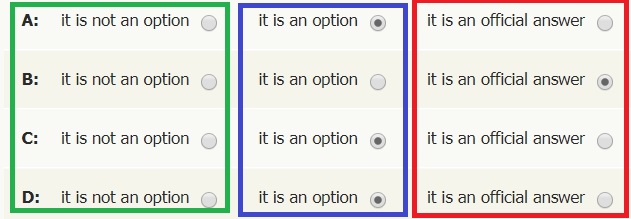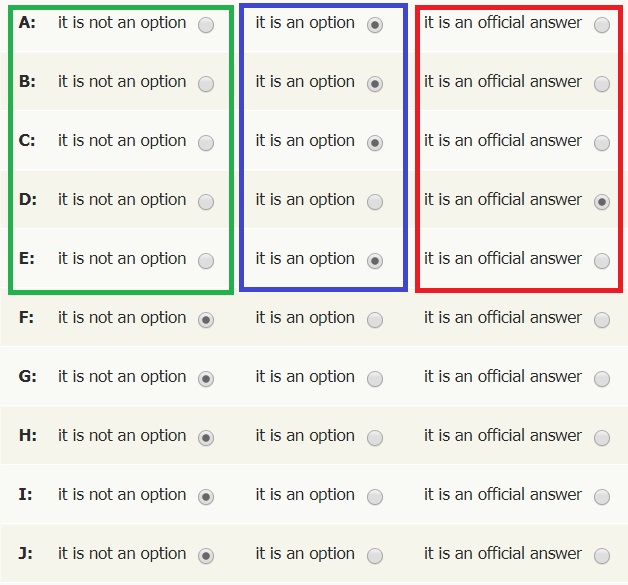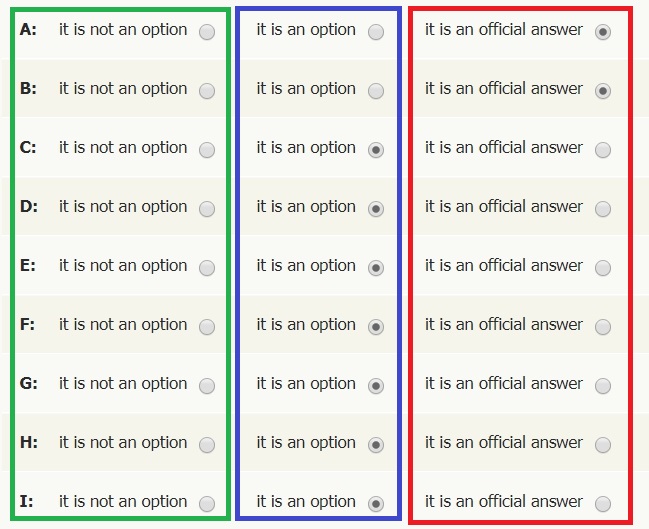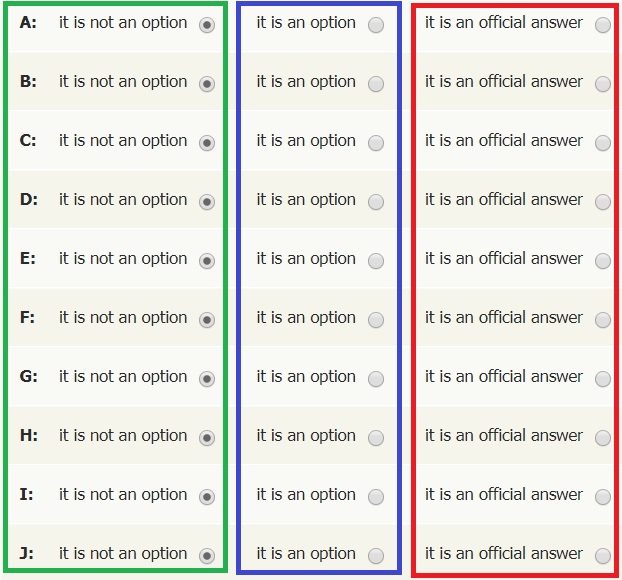How to use the timer and to set up
After we have explained how to post every GRE question type in the right manner, it is the time to understand how the timer usage and how to set up it, in order to be useful for the student and the entire community. I.e. to the other students who want to practice a question on the board under a time constraint.
The GREPrepclub team's work is student-centered. We work hard on a daily basis to provide to the students not only features that are user-friendly but also every possible assistance he/she could imagine to achieve the best score as fast as the student can.
Broadly speaking, we do have two timer case scenarios.
One one hand the usage of the timer, and on the other extreme how to set up it when you do create a new quant question.
Depending on the question you are going to post on the board: QCQ, PS (one or multiple answer choices), NE, or DI the timer itself shows up differently. We have
# three possible case scenarios.
# First scenario -
Quantitative Comparison QuestionThe quantitative comparison questions as you do know have always four answer choices
A)The quantity in Column A is greater.
B)The quantity in Column B is greater.
C)The two quantities are equal.
D)The relationship cannot be determined from the information given.
The time once set-up looks like the following
Attachment:
 #GREquantitative comparison question timer.jpg [ 68.65 KiB | Viewed 40651 times ]
#GREquantitative comparison question timer.jpg [ 68.65 KiB | Viewed 40651 times ]
How to set the timer is pretty simple. Suppose the answer is B
Attachment:
 #GRE QCQ 2.jpg [ 46.68 KiB | Viewed 40639 times ]
#GRE QCQ 2.jpg [ 46.68 KiB | Viewed 40639 times ]
On the right side (
red ) you have to flag the OA; in the middle (
blue ) the other answer choices which are
wrong and on the left (
green ) the flags must be blank. The most common mistake that the students do is to mark only and solely the right answer choice, leaving the rest of the choice in the green zone and blank in the blue (the middle). The result, in this case, looks like the following
Attachment:
 #GRE QCQ 3.jpg [ 55.61 KiB | Viewed 40579 times ]
#GRE QCQ 3.jpg [ 55.61 KiB | Viewed 40579 times ]
This is the worst scenario: not only the OA is suddenly revealed without even make a bare attempt of the question itself but also it would vanish your personal
workbook because it will not show up the question you pick wrong, practicing. As I mentioned earlier this article, we put a lot of effort to create a future such as a timer. The reason, aside from the bulky work behind it to create, why the time is so crucial is because attempting a question not using the timer or under NOT a time constraint is a complete failure. The GRE test is a tough test just because the questions are tricky
under time condition. Every question during the exam before or after could be solved if we would have one hour to solve it. Therefore, practice always with the timer runs on.
# Second scenario -
Problem Solving (one answer choice)Problem Solving question with five answer choices
Attachment:
 #GREPrepclub timer.jpg [ 64.12 KiB | Viewed 40648 times ]
#GREPrepclub timer.jpg [ 64.12 KiB | Viewed 40648 times ]
As you can see, the timer has five possible answers and only
ONE is correct.
In this example, supposing the OA is D you have to set up the time, which is always at the bottom of the frame in which you are going to type or create a question, in the following manner
Attachment:
 #GREprepclub timer problem solving one answer choice.jpg [ 101.29 KiB | Viewed 40733 times ]
#GREprepclub timer problem solving one answer choice.jpg [ 101.29 KiB | Viewed 40733 times ]
# Second scenario -
Problem Solving (one or more answer choices)In case you do have a Problem Solving multiple choices and multiple answer choices are correct, the timers look like the following
Attachment:
 #GREPrepclub timer more choices.jpg [ 75.55 KiB | Viewed 40875 times ]
#GREPrepclub timer more choices.jpg [ 75.55 KiB | Viewed 40875 times ]
Attachment:
 #GRE problem solving multiple answers.jpg [ 97.97 KiB | Viewed 40730 times ]
#GRE problem solving multiple answers.jpg [ 97.97 KiB | Viewed 40730 times ]
# Second scenario -
Numeri EntryIn case of a numeric answer question, the timer set-up boils down to whether I pick it right or wrong: YES or NO. This is because I have to insert the value of my answer into the spoiler tag (see above when I explain how to post a NE question).
Attachment:
 #GREPrepclub timer numeric entry.jpg [ 63.69 KiB | Viewed 40754 times ]
#GREPrepclub timer numeric entry.jpg [ 63.69 KiB | Viewed 40754 times ]
Attachment:
 #GRE Numeric Entry.jpg [ 108.58 KiB | Viewed 40720 times ]
#GRE Numeric Entry.jpg [ 108.58 KiB | Viewed 40720 times ]
# Third scenario -
Data InterpretationA DI question could be a Problem Solving ( one or multiple answer choices) question, a Numeric Entry Question. Never a Quantitative Comparison Question. So refer above how to configure the timer.












